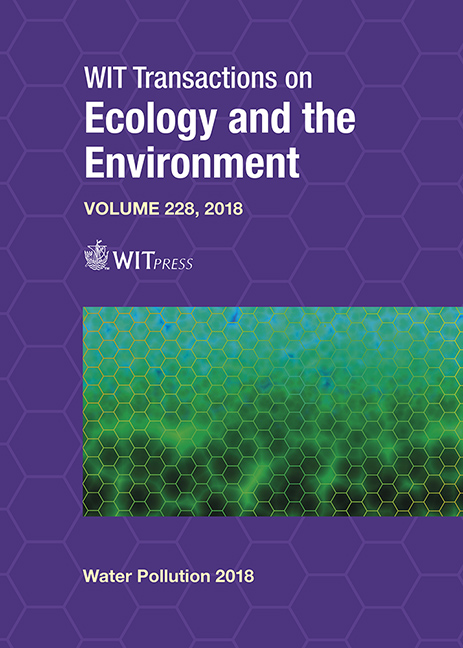IMPACT OF INDUSTRIAL AND MUNICIPAL WASTE-LOAD ON SKINNERSPRUIT IN GAUTENG PROVINCE, SOUTH AFRICA
Price
Free (open access)
Transaction
Volume
228
Pages
8
Page Range
21 - 28
Published
2018
Size
355 kb
Paper DOI
10.2495/WP180031
Copyright
WIT Press
Author(s)
DAVID O. OMOLE, BADEJO A. ADEKUNLE, JULIUS M. NDAMBUKI, ADEBANJI S. OGBIYE, OLUMUYIWA O. ONAKUNLE, PRAISEGOD C. EMENIKE
Abstract
South Africa’s semi-arid climate makes surface water a highly valued resource for the country. Typical of many developing countries, however, surface water quality is often lowered because of effluents which are discharged into nearby rivers, streams and lakes. In Gauteng Province, South Africa, Skinnerspruit is an important water body which flows eastwards from Hartbeerspoort (a lake in West Pretoria), and flows approximately parallel to the Magalies Freeway, passing through both residential and industrial estates in the capital city. It therefore serves as a sink for industrial and municipal effluent discharges which take place daily. Field sampling studies conducted on Skinnerspruit (as well as two canals that deliver effluents from industrial and residential estates into Skinnerspruit) in January and June focused on faecal coliform, dissolved oxygen (DO), and nitrate/nitrite as nitrogen. Other tested parameters included chemical oxygen demand (COD), pH, total suspended solid, and temperature. Some of the results showed that faecal coliform in the river had mean values of 111,444 upstream (U/S) and an attenuated mean value of 3,607 cfu/100 ml downstream (D/S). However, DO had mean concentration of 7.24 mg/l U/S but an improved value of 7.75 mg/l downstream. pH improved marginally from its alkaline state of 8.18 U/S to 8.13 D/S. Temperature also improved marginally from 17.55°C U/S to 17.04°C D/S. Nitrate worsened from to 1.31 to 3.19 mg/l D/S. COD improved from 27 to 20.11 mg/l. These results indicate that Skinnerspruit is heavily polluted, especially from faecal coliform. However, the river is responding positively through natural attenuation processes.
Keywords
river, pollution, municipal waste, effluent, attenuation, dissolved oxygen





